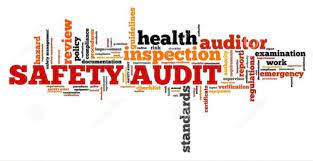Ensuring Workplace Safety: A Comprehensive Guide to Conducting a BIS14489 Safety Audit

Process Hazards Analysis
October 19, 2023
The Power of Behavior-Based Safety (BBS) Implementation for Achieving a Transformational Safety Culture in the Workplace
October 21, 2023Ensuring Workplace Safety: A Comprehensive Guide to Conducting a BIS14489 Safety Audit
In this article, we delve into the crucial topic of workplace safety and explore the importance of conducting a BIS144489 safety audit. The safety of employees should be the top priority of any organization. This comprehensive guide will provide readers with the necessary information to identify potential hazards and prevent accidents. We’ll cover everything from the proper equipment and techniques to best practices for creating a safety culture within the workplace. By the end of this article, you can feel confident in your ability to conduct a thorough safety audit and ensure a safe work environment for all.
Introduction
Workplace safety is a critical issue that affects every worker. In today’s fast-paced work environment, ensuring that employees are safe and healthy can be a daunting task. This is where conducting a BIS144489 safety audit comes into play, as it provides an in-depth review of the existing safety procedures in an organization. The comprehensive guide to conducting BIS144489 safety audits is essential for employers who want to ensure that their workplace is safe and healthy for their employees.In this article, we will provide you with all the necessary information on how to conduct a BIS144489 safety audit. We will guide you through each step of the process and provide you with valuable insights into analyzing safety performance data, evaluating employee training programs, and developing action plans for improvements. After reading this article, you can expect to have a thorough understanding of how to ensure workplace safety through rigorous evaluation and improvement strategies
Understanding the Importance of Workplace Safety
The safety of employees in the workplace is a critical aspect that should never be overlooked. A safe working environment is essential for enhancing employee morale and productivity. Workplace safety also helps to minimize the risk of accidents and injuries, which could result in legal liabilities, increased healthcare costs, and even loss of life.
Besides these consequences, workplace safety is an ethical responsibility that every employer should uphold. Employees have a right to work in an environment free from hazards that could lead to physical harm or psychological trauma. Employers who prioritize workplace safety can build trust with their employees and create a positive reputation, which can attract top talent. Therefore, understanding the importance of workplace safety is essential for creating a conducive work environment where everyone can thrive.
Overview of a BIS144489 Safety Audit
Ensuring Workplace Safety: A Comprehensive Guide to Conducting a BIS144489 Safety AuditOverview of a BIS144489 Safety Audit
In today’s fast-paced business world, ensuring workplace safety is critical. One way to ensure safety is through conducting a BIS144489 safety audit. This audit is designed to measure whether an organization’s safety management system meets industry standards and regulatory requirements.
A comprehensive BIS144489 audit will cover several areas of workplace safety, including hazard identification and risk assessment, employee training programs, emergency preparedness, incident reporting procedures, and safety communication protocols. The audit provides an opportunity for companies to identify gaps in their current safety management systems and make necessary improvements.
Step-by-Step Guide to Conducting a BIS144489 Safety Audit
A BIS144489 safety audit is an essential tool for ensuring workplace safety. Conducting a comprehensive audit can help identify potential hazards, assess the effectiveness of existing safety measures, and develop a plan for improvements. Here is a step-by-step guide to conducting a BIS144489 safety audit:1. Establish the Audit Team: The first step in conducting a BIS144489 safety audit is to form an audit team. This team should include individuals with relevant expertise and experience in workplace safety, such as supervisors, managers, and safety professionals.
2. Plan the Audit: Before beginning the actual audit process, it’s important to plan and prepare accordingly. This includes reviewing relevant documentation, scheduling the audit date and time, and preparing necessary materials such as checklists.
3. Conduct On-Site Inspection: The on-site inspection involves physically examining the workplace environment to identify potential hazards or unsafe conditions. During this process, the audit team should pay close attention to any unsafe work practices or procedures that could pose risks to employees.
4. Evaluate Safety Management Systems: In addition to inspecting physical facilities and equipment, it’s equally important to evaluate safety management systems such as policies, procedures, training programs, etc., in order to identify areas that need improvement.
5. Analyze Data Collected: After completing on-site inspections and evaluating management systems data collected should be analyzed thoroughly using appropriate tools such as statistical software or spreadsheets.
6. Develop Action Plan for Improvements: Finally based on data analysis report should be created outlining recommended improvements which will then be followed up with corrective action plans
Analyzing Safety Performance Data
A critical aspect of conducting a BIS144489 Safety Audit is analyzing safety performance data. This involves reviewing the history of accidents, injuries, and near misses to identify patterns and trends in workplace safety. Companies can use this data to determine whether their safety policies and procedures are effective or require improvement.
To analyze this data effectively, it is vital to have accurate records of all incidents, including the time and location of each event, the type of injury or damage suffered, the primary causes of accidents or hazards, and any corrective measures taken. By tracking this information over time, companies can identify potential hazards before they become significant problems that could lead to serious injuries.
In addition to identifying areas for improvement through data analysis, companies can also use this information to incentivize employees who excel in maintaining a safe work environment. Recognizing employees who show exceptional dedication to workplace safety can motivate them and others to prioritize safety as a core value.
Evaluating Employee Training Programs
One of the most critical components for ensuring workplace safety is providing adequate employee training programs. In this section, we’ll explore how to evaluate the effectiveness of your current training programs and identify areas for improvement. First, it’s essential to review the safety training materials and methods currently in place to determine if they meet industry standards and regulations. Are employees receiving proper instruction on hazardous materials handling, emergency response procedures, and other critical safety measures? Are new hires being adequately onboarded?
Next, assess employee understanding of the training materials by conducting knowledge assessments or observation evaluations. Do workers know how to properly use personal protective equipment or follow lockout/tagout procedures? Are there any knowledge gaps that need addressing?
Lastly, review the impact of training programs on overall safety performance. Has there been a reduction in injury rates since implementing new training initiatives? Are workers more aware of potential hazards and able to take proactive steps to prevent accidents? Evaluating employee training programs is an ongoing process that requires regular assessment and refinement to ensure maximum effectiveness.
Developing an Action Plan for Improvements
After completing a BIS144489 safety audit and analyzing the findings, the next step is to develop an action plan for improvements. This plan should outline specific steps that need to be taken to address any issues or gaps identified during the audit. It should also include timelines for each task and assign responsibilities to specific individuals or teams.One of the most important aspects of developing an action plan is ensuring that it is realistic and achievable. It’s essential to prioritize tasks based on their level of importance and impact on safety. The plan should also consider available resources, such as budget, personnel, equipment, and time.
Another crucial factor in developing an effective action plan is getting buy-in from all levels of the organization. This includes management, employees, contractors, suppliers, and other stakeholders involved in safety procedures. Encouraging open communication and collaboration can help ensure that everyone understands their roles and responsibilities in implementing the plan’s actions. By involving all parties in this process, you can increase engagement and motivation towards achieving safer workplace operations.
Conclusion
In conclusion, conducting a BIS144489 Safety Audit is essential for ensuring workplace safety and preventing accidents. By following the step-by-step guide outlined in this article, you can identify areas of weakness and develop an action plan for improvement. Remember that safety is a continual process, and regular audits are necessary to maintain a safe working environment. By prioritizing safety, employers can protect their employees’ well-being while also improving productivity and profitability.
At TSM TheSafetyMaster Private Limited we offer following services
TSM TheSafetyMaster® Private Limited
Unit No 221-451-452, SPL1/J, 2nd & 4th Floor, Sunsquare Plaza Complex, RIICO Chowk, Bhiwadi 301019, Rajasthan, India
Phone: +91 1493 22 0093
Mobile: +91 7665231743/9413882016
Email: info@thesafetymaster.com




